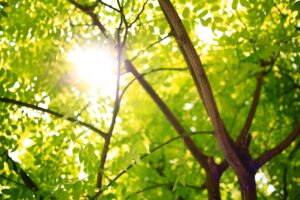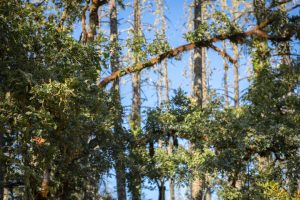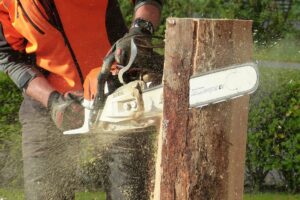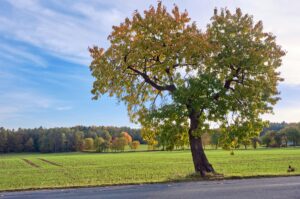Tree Removal Snyderville Utah
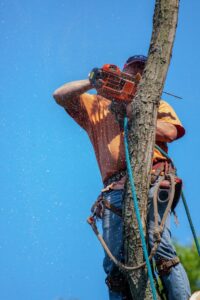
Tree Removal Snyderville Utah
WHAT IS TREE REMOVAL?
When providing a proposal for a tree removal, an arborists also evaluate the site for tree removal. While having the tree ground is not always necessary, many people prefer to deal with the tree at the same time as having the tree removed. Tree removal allows the property owner to use the area where the tree once stood for laying sod or planting a flower bed. The tree grinder also produces mulch that has many uses around the yard. Here are answers to some common questions we get about tree removal.
HOW DEEP CAN THE TREE GRINDER GO?
They generally grind four to six inches below grade (ground level). If deeper removal is needed, it can be requested, although the snyderville of tree removal may increase. The depth to which a tree can be ground is subject to some limitations, however. The tree-removal blade has a diameter of about 10 inches, and can only be maneuvered up and down within a specific range.
A tree that grew in shallow soil, such as over the limestone bedrock prevalent in the Snyderville area, may not have six inches of grindable depth.
Other material near or around the tree may limit how deep the grinder can go. While the tree grinder is powerful, it is only designed to handle plant material, wood, and dirt. Take note of:
Fencing, concrete, brick, or rock around a tree (such as a tree ring)
Nearby trees that may have roots under the tree
Swimming pools, walkways, and patios that may prevent the grinder from reaching all of the root material
Lawn irrigation, sprinkler systems, tree lighting wiring, and buried hoses
We generally do not grind deep enough to risk interfering with properly-installed utility lines or buried cables, but unforeseen obstacles can be encountered that necessitate a shallower grind.
What exactly lies beneath the roots of a tree or the surrounding soil may be a mystery, even to the homeowner. While we are very careful when removal a tree, we will not take responsible for damage to irrigation lines or other items located below ground that we are not aware of. It is important to inform your arborist of any sprinkler systems or other objects that might be in the area to be ground before the work begins.
WHAT IS LEFT AFTER A TREE IS GROUND?
As the blade grinds the tree and surface roots, it produces a mulch made up of tree material and dirt. The mulch produced by tree removal can take up a much greater volume than the original tree. (It can be helpful to think of the difference between a block of cheese and that same cheese after it is grated.)
Mulch from tree removal is valuable organic material that decomposes more quickly than many other kinds of mulch, as there are generally smaller wood particles present, and more soil to help it break down. It is our standard practice to push the mulch back into the area that has been ground (“backfilling”). Even so, there is usually a large pile of mulch left above ground, often much more than the tree owner expected. Because of its composition, the mulch does settle fairly quickly, but many people prefer to use the mulch around their yards, rather than leaving it where the tree once was.
Tree grinder mulch can be used for composting or applied in flower beds. (Depending on exact composition of the mulch, it may not perform in the same way as typical hardwood mulch, and may need to be replaced sooner.) After some time, when the mulch has settled, it can be packed into the ground-out area, making the area ready to be prepped for laying sod or for planting a flower bed or other small plants. If requested, we can provide mulch bagging and/or bagged mulch haul-off as an additional service after tree removal, but our standard practice is to leave all grinder mulch on-site.
WILL THE TREE COME BACK AFTER A TREE IS GROUND?
Even with tree removal, some species of tree can still send up shoots and new growth from the roots left below ground. Crape myrtles, chinaberry trees, hackberries, and Bradford pears are some common species in the area that can be very persistent in growing back. The sprouts that return after tree removal can be trimmed or mown down and will eventually stop coming back, as the remaining roots use up their energy reserves. Commercially-available woody stem killer can be used to accelerate the dieback of the roots. White vinegar can also be used as an organic alternative to commercial root killer.
CAN I REPLANT AFTER A TREE IS GROUND?
We are often contacted about removing a tree that the owner would like to replace. We do not recommend trying to re-plant trees in the same area where a tree was removed and the tree ground. Even with a deep grind, an extensive root system remains underground.
The old root system can interfere with the new tree’s attempts to become established. Furthermore, if the old tree had a disease, that disease may still be present in the remaining root tissue, and can be transmitted to the new tree. When replanting is desired, we can discuss finding a location that is far enough from the removed tree to lessen the likelihood of interference from the old root system. If homeowners’ association or municipal restrictions require a tree to be replaced in a certain location, excavation or hand digging may be the only options.
CAN EVERY TREE BE GROUND?
In the case of a tree becoming uprooted (because of storm damage or root rot, for example), the tree cannot be dealt with as easily. If there is a large amount of root material above ground, the tree grinder may be physically unable to reach it. Depending on the type of tree and how it grew, it may pull up a great deal of dirt, turf grass, and other underground material when it falls. What is left after removal an uprooted tree may be more dirt than tree matter, and may not be suitable for use as mulch.
Weather is also a factor that can determine how and when tree removal can be performed. A long period of rain can cause the soil to become waterlogged. Operating a tree grinder in heavy, wet soil can not only make a bigger mess than usual, but can damage the surrounding area due to the weight of the machine. It may be necessary to wait until the area dries out before attempting even a “standard” tree grind.
If a customer has a special circumstance, like an uprooted tree, or there are multiple trees in one area to be ground, we always send an arborist to assess the situation before providing a quote or scheduling the tree grinder.
HOW MUCH DOES TREE REMOVAL COST?
The cost of tree removal is dependent upon three main factors: the size of the tree, the location of the tree, and how deep the grinder needs to go. While we generally provide a tree removal snyderville when we give a quote for tree removal, we are also happy to evaluate any other trees you may want to have ground.
HOW DO I MEASURE A TREE?
The base cost for tree removal is determined by the diameter of the tree in inches, including any above-ground roots. This measurement can be taken before or after a tree is removed. To get the right measurement, it is important to go “from dirt to dirt.”
This means measuring from the tree edge or root point (where it touches the dirt) farthest from the trunk to the opposite edge or root point. It is also important to measure from different directions and to take an average measurement, as this most accurately reflects the area to be ground. The “dirt-to-dirt” measurement can be quite a bit larger than the diameter of the tree trunk, and we do see situations where the tree removal is more costly than removing the above-ground tree.
This is a 75-inch tree, measured “dirt to dirt” at the yellow line. Measuring on the trunk is inaccurate: if this tree were measured at the red line, the result would only be 37 inches, which is not the actual area to be ground. Even after a tree is cut down, properly measuring a tree can be tricky when there is a root flare and surrounding vegetation.
CAN THE TREE GRINDER REACH MY TREE?
Our standard tree grinder is a machine that is seven feet long and three feet wide. At the front is a rounded blade (similar to the tip of a chainsaw) that chips away wood as it moves across the tree. The tree grinder is designed to fit through standard gates, but some older or narrow gates may not be able to accommodate it. The weight of the machine may also prevent it from reaching certain areas without damaging walkways or ground cover. While the removal blade has some maneuverability, clearance of at least seven feet on one side of the tree is required to allow the grinder to access the area to be ground. In smaller areas with less clearance, it is possible to use our smaller tree grinder, but this can increase the time and cost of the procedure.
CAN I JUST LEAVE THE TREE?
It is not necessary to grind or otherwise remove a tree after a tree is taken down. We have customers who request a tree not be cut all the way to ground level, and use the remaining tree as a plant stand, table base, or just a yard feature. Even if the tree is cut close to the ground, it can last several years. Preservative coatings can also be applied to prolong the life of a standing tree.
Some homeowners prefer to let a tree decompose naturally over time. Old trees can become habitats for fungi, insects, and other creatures. As the tree breaks down, it can become rich organic material that can be added to compost or used in planting. If a tree is left unground, however, it can continue to send out new growth for years after the tree has been removed. Drilling holes in the tree and filling with Epsom salt or using commercial tree killer can accelerate tree dieback, but those chemicals can be toxic to surrounding plant life. Treating the tree with chemicals can also make the area hazardous to people and pets.
